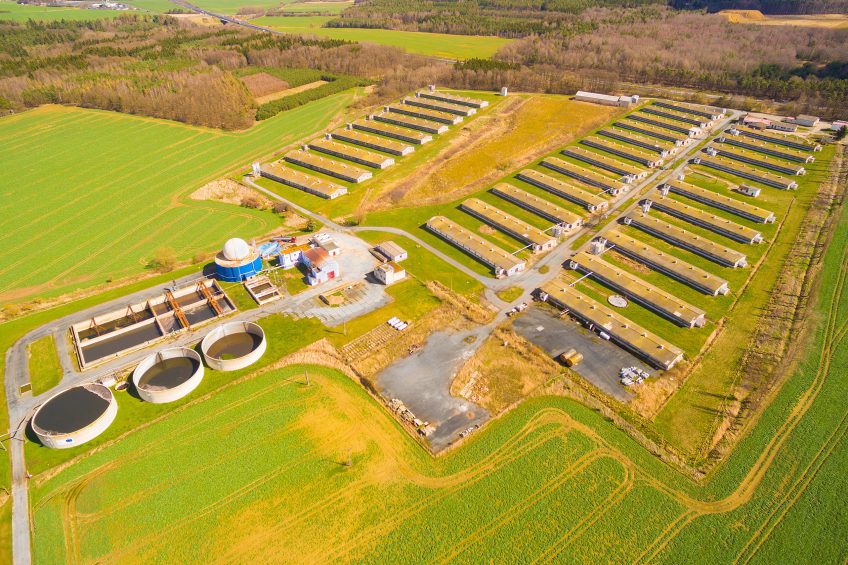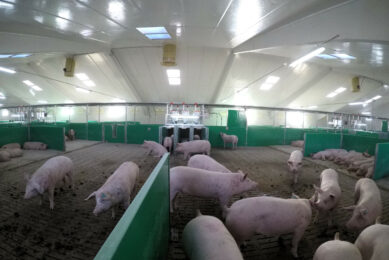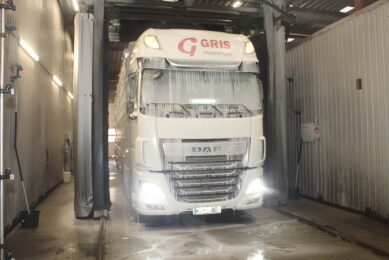On top of every movement in and around the farm

Checklists and trainings are welcomed instruments to make farm staff aware of the need for good biosecurity. Nothing, however, beats knowing about how they behave. Technological progress makes it possible to measure farm movement and adjust it in real-time.
Biosecurity is a top concern in the livestock industry since it affects performance, economic results and can even close markets for trading when catastrophic diseases are present (African Swine Fever, avian influenza or Foot-and-Mouth Disease, among others). Until now, biosecurity is managed by the implementation of protocols affecting the control of external pathogens entering the farm (bio-exclusion), the spread of the pathogens within the farm (bio-management) and the prevention of infections transmitted to other farms (bio-containment).
Checklists and training
In most cases, this is managed by checklists and training of farm staff, which does not generate subjective assessments as the data are based on the evaluator’s feelings. Obviously this approach makes a proper objective general assessment, an early reaction to problems or breaches of the situation and evaluation of the impact of training and improvement plans, impossible.
Information and communication technologies (ITT) allow measurements of indicators that were impossible just a few years ago. One such measurement is the objective control of farm staff movements to understand the possible impact on the spread of disease. Based on the needs of the sector, and the possibilities offered by ITTs, a new system to objectively assess farm staff movements in the facilities and relate them to health and performance indicators, was recently developed and tested in several farms in Segovia, Spain.
New system assessing movement
The system revolves around on small devices, called beacons, which are worn by farm staff that are read by standard smartphones placed at entries and exits of every barn. The system reads every staff’s movement and the information is transferred, in real-time, to a system that processes and allows easy visualisation and use.
Figure 1 – Movements visualisation dashboard.

A customised web-based viewer is developed for that location (see Figure 1) and three types of staff movements are collected:
1. Right. From higher health barns to lower (i.e., from gestation to lactation barn);
2. Wrong. Low risk. From lower health barns to higher (i.e., from lactation to gestation);
3. Wrong. High risk. From lower health barns to higher (i.e., from finisher barns to gilts).
A wrong movement can be corrected, for example – when stopping in lockers for five or more minutes (change clothes or shower).
Initially, farms will be qualified and their PRRS status will be defined based on disease history and PCR and ELISA results. At the same time, devices are placed in every barn to understand ‘usual’ patterns of movement. After a month of observations, processed data offered a first look at distribution of movements and showed a different pattern in stable and unstable farms (see Tables 1 and 2).
Special SOPs, function guides and training materials can then be designed for every farm based on its particular challenges.
Improving the percentage of wrong movements
After six months of trials on the Spanish farms, the first results were obtained for both percentage of wrong movements that were improved (Figure 2), and PCR and ELISA results.
It is interesting to see a time course evolution of the right and wrong movements (high or low risk). A second unstable farm had a 38% improvement in the high risk movement with a linear tendency in the decrease. Some peaks were observed during the period with new workers without proper training or vacation periods. This situation highlights the importance of paying special attention to certain farm situations that might lead to big problems when not considered or properly addressed on a routine basis (Figure 3). Therefore, monitoring and reviewing movements with farmers is key to ensure the success of the system.
Figure 2 – Percentage of improvement of wrong movements, high risk (red), low risk (yellow) and right movements (green).

These results support the importance of proper farm staff movements and their impact on health and production. To better define the impact of farm staff movements and other biosecurity risk factors to maintaining farm health and disease control standards, a large global project was initiated. This project, B-eSecure, supported through a partnership with MSD Animal Health, will allow farmers and veterinarians to detect and react earlier to health risks, such as Porcine Reproductive and Respiratory Syndrome (PRRS), and even anticipate and predict problems, based on better management procedures.
Figure 3 – Distribution of right and wrong movements after using the system. Unstable PRRS farm.












